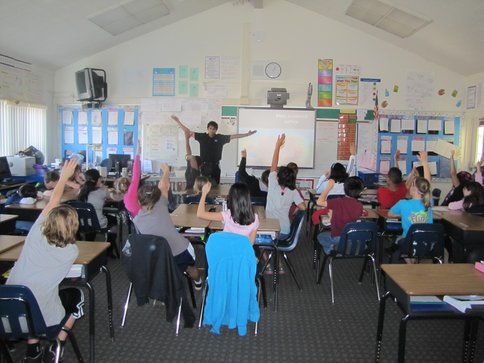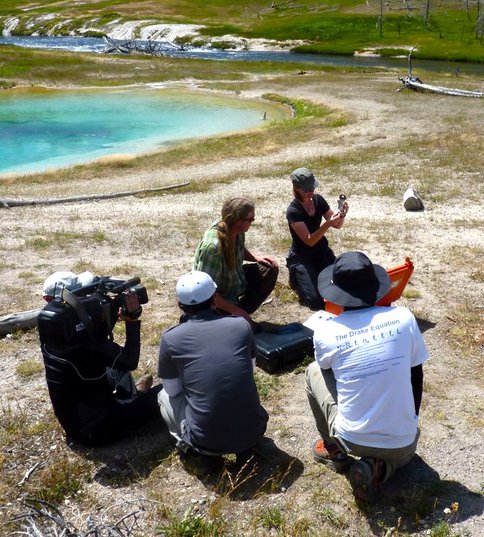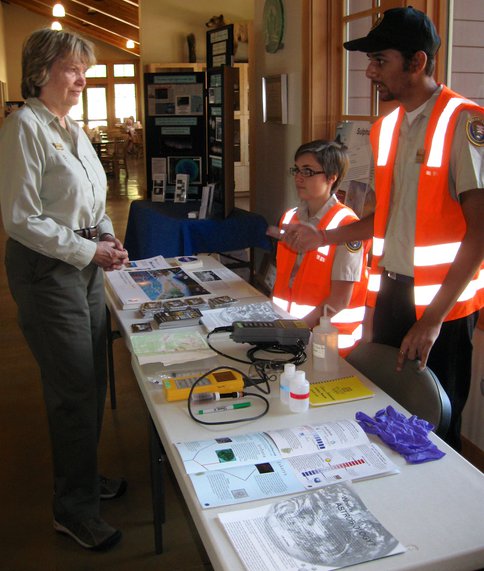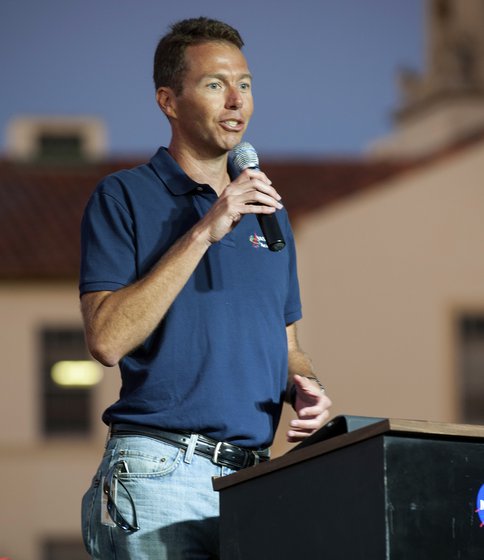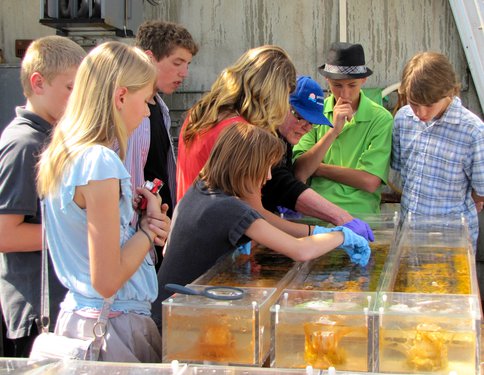2012 Annual Science Report
 NASA Ames Research Center
Reporting | SEP 2011 – AUG 2012
NASA Ames Research Center
Reporting | SEP 2011 – AUG 2012
EPO Activity: Scientists' Involvement in EPO: Making the Case
Project Progress
The NAI Ames Team has an entire portfolio of diverse EPO activities that contributes to advancing the field of astrobiology and captivating audiences from “K-to-Gray.” The team’s efforts are designed to increase awareness, appreciation and participation in science, technology, engineering and math fields as they relate to astrobiology. Specific activities occurred in: * K-12 classrooms * universities * museums * planetariums * national parks * NASA centers * Mars Science Laboratory public media events nationwide.
In addition, team members participated in: * FameLab * film projects * public lectures * invited talks * keynote addresses * press interviews * career talks * science fairs * science camps * field-based lectures * classroom/university seminars * lab tours * virtual lectures * video conferences worldwide * formal presentations at scientific conferences and workshops * organization of symposiums, chairing science sessions.
Ames team members engaged in a diversity of roles in EPO as resources and partners in a variety of activities throughout the year.
Fourth graders at Farnham Elementary School in San Jose, CA requested a “REAL” NASA scientist to visit their school and discuss landing site options on Mars. The Ames team’s Sanjoy Som responded to the call and was welcomed by 70 students and three teachers. During his presentation, “Searching for Life,” the students eagerly asked questions about Mars, landing sites for the Curiosity rover, and alien life.
Ames team member Niki Parenteau and colleague Eric Boyd, Montana State University NAI team, were invited to participate in a film project with the Korean Broadcasting Service in Yellowstone National Park. Parenteau was featured using the field-based version of the CheMin instrument, which is part of the payload of the Mars Science Laboratory’s Curiosity rover, and designed to characterize the chemistry and mineralogy of geological samples on Mars. Parenteau studies microbes that live in extreme environments in Yellowstone. Her research focuses on characterizing not only how these microbes survive, but how they become fossilized in the mineral deposits at the hot springs. Studies of analog sites on Earth are relevant to the detection of the presence of past microbial life on Mars.
More than 400 visitors passed through the Lassen Volcanic National Park Visitor Center during August’s Dark Sky Festival. NASA’s astrobiology student interns hosted an astrobiology table where they explained the intern program, how they help NASA scientists and why NASA is interested in Lassen as an analog for Mars.
Tori Hoehler, Ames team Co-I, presented a lecture on the CheMin instrument and talked one-on-one with hundreds of people at the Mars Science Laboratory landing public event at Ames Research Center. More than 7000 people attended the event and participated in the landing celebration.
Ames Research Center’s Rooftop Greenhouse is home to many slimy substances. Research Microbiologist Linda Jahnke teaches students from rural Evergreen Middle School about microbial community structure. A student removes a slice of a microbial mat collected from the hypersaline ponds in Guerrero Negro, Baja, CA.
